
Vitamin K is an essential vitamin throughout our bodies, helping our blood to clot. It may also be relevant for improving bone health, although this area is more heavily debated. Regardless, getting enough vitamin K in your diet is important and vitamin K rich foods are the main way to do so.
You’ll notice two key types of food on this list. Some are plant-based and others come from animals instead. This difference is partly because there are multiple forms of vitamin K, with the most significant being vitamin K1 and vitamin K2.
Vitamin K1 is largely found in vegetables, particularly in leafy greens. Vitamin K2, on the other hand, can be found in foods like meat, eggs, and cheese. Both types are important for health.
People who take warfarin, or a similar medication, may need to pay close attention to their vitamin K intake. This is because vitamin K interacts with the medication, making it behave differently.
You don’t need to cut down on vitamin K when you take warfarin. In fact, maintaining a healthy diet is important, and that includes getting vitamin K. But, you do need to keep your vitamin K intake roughly consistent, so you’ll need to pay attention to the amount of vitamin K that you eat.
Vitamin K Rich Foods
- Kale
- Spinach
- Collards
- Other Types Of Leafy Greens
- Broccoli
- Brussels Sprouts
- Asparagus
- Okra
- Kiwis
- Parsley
- Spinach Pasta
- Soybeans
- Green Beans
- Nuts
- Pumpkin
- Avocado
- Natto
- Fermented Food
- Liver
- Red Meat
- Chicken
- Pork
- Other Meats
- Cheese
- Eggs
Kale

Kale has a stellar reputation as a source of nutrients. It’s also one of the highest food sources of vitamin K, which reinforces that reputation considerably.
The vegetable is a type of leaf cabbage, although kale plants do not form a head as cabbages do. The leaves tend to be purple or green, although there are other colors as well. You’ll also find some versions with flat leaves and others that have curly leaves instead.
There are many ways to cook kale and it can be enjoyed raw as well. Kale chips are an interesting modern approach that act as a low fat substitute to potato chips. You can easily make kale chips at home and there are even some companies that produce them commercially.
Spinach

Spinach might not have the same reputation as kale, but that doesn’t stop it from being packed with nutrients. In practice, spinach is just as good for you as kale is – it’s just that the two vegetables differ in some of their key nutrients.
Regardless, spinach is another powerful choice for vitamin K. It can also be cheaper than kale, which could be a reason for relying on it regularly.
Like kale, you can eat spinach cooked or raw. Cooking spinach changes its flavor profile considerably and many people find that they prefer it cooked rather than raw. You may also get more benefits if the spinach is cooked, as cooking helps to reduce the vegetable’s high oxalate content.
Collards

Continuing on our theme of leafy greens, collards (or collard greens) are another good choice for vitamin K. This shouldn’t be too surprising, as they come from the same species as cabbage.
The term collard actually refers to multiple cultivars – and the nutritional profile may differ from one cultivar to another.
You’ll often find collard greens cooked and served with other greens, which gives you a variety of nutrients all at once. You’ll have a more balanced diet if you focus on multiple vegetables like this rather than picking just a few favorites.
Other Types Of Leafy Greens

Many green vegetables are fantastic for vitamin K. Turnip greens are just as powerful as kale, spinach, and collards, while options like beet greens, dandelion greens, and mustard greens contain a little less vitamin K.
You can also turn to lettuce and cabbage, although these are lower in vitamin K again. This isn’t too surprising, as lettuce and cabbage don’t have the same deep color that you find with spinach and kale.
Broccoli

We’re continuing on our green theme here with broccoli. Broccoli is a classic vegetable choice, one that many of us have had on our dinner table for years.
The vitamin K in broccoli is pretty impressive. You’re getting much more than your daily vitamin K intake from a single cup of cooked broccoli.
Brussels Sprouts
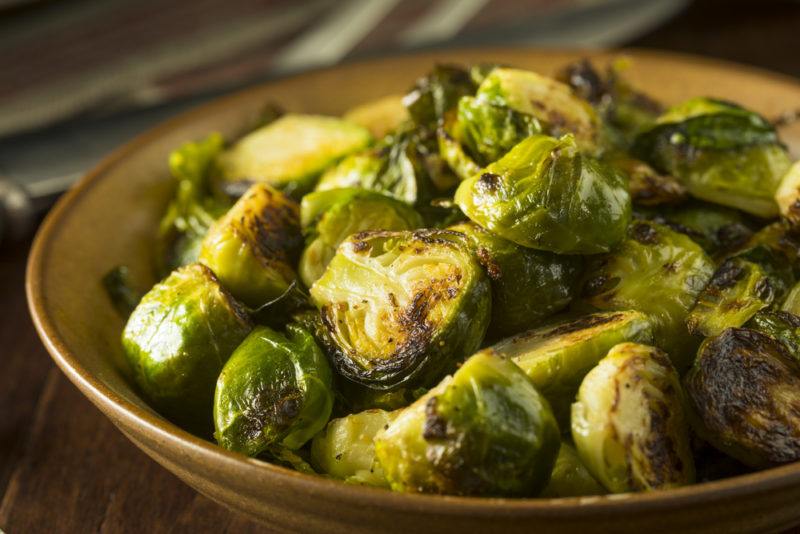
While they might not be everyone’s favorite vegetable, Brussels sprouts are almost as good as broccoli for vitamin K. This means you don’t need to eat all that many to get a decent amount of vitamin K.
And honestly, Brussels sprouts aren’t as bad as many people imagine. Most of the problems come from times where Brussels sprouts were cooked badly. If you cook them well, Brussels sprouts can be pretty tasty.
Finding good recipes isn’t that difficult these days, as there are so many cookbooks and food bloggers out there.
Asparagus

Asparagus does more than just taste good. The vegetable can also give you a decent amount of vitamin K – roughly the same amount as you get with broccoli.
This is great news if you happen to love the taste of the vegetable.
Okra

Have you seen okra? It’s an unusual vegetable and one that people are often quite opinionated about (okay, technically it’s a fruit, but we eat it like a vegetable). The plant has edible seed pods that sometimes go by the name ladies’ fingers.
The unusual aspect of okra is that it can easily be slimy when it is cooked. This can be avoided by cooking the okra well. Even so, the flavor and the texture of okra isn’t for everyone.
Kiwis

If you want fruit rather than vegetables, kiwis are a good choice. Their vitamin K content is lower, offering you around 60% of your daily intake. And, you’re probably not eating a whole cup of kiwis at a time either.
Still, your vitamin K intake adds up. You don’t need to get all your vitamin K in one place anyway.
You might notice a theme here too, as kiwis are yet another green choice.
Parsley

Parsley is an exceptional source of vitamin K, giving you more than 800% of your daily intake in a cup of the herb. The catch is that you’re not going to be eating much parsley at a time. Most of us just use a pinch or two scattered on top of a meal or in a recipe.
You’ll find something similar with other herbs and spices too. They’re often very high in nutrients and plant-based compounds, but your serving size will be low.
Spinach Pasta
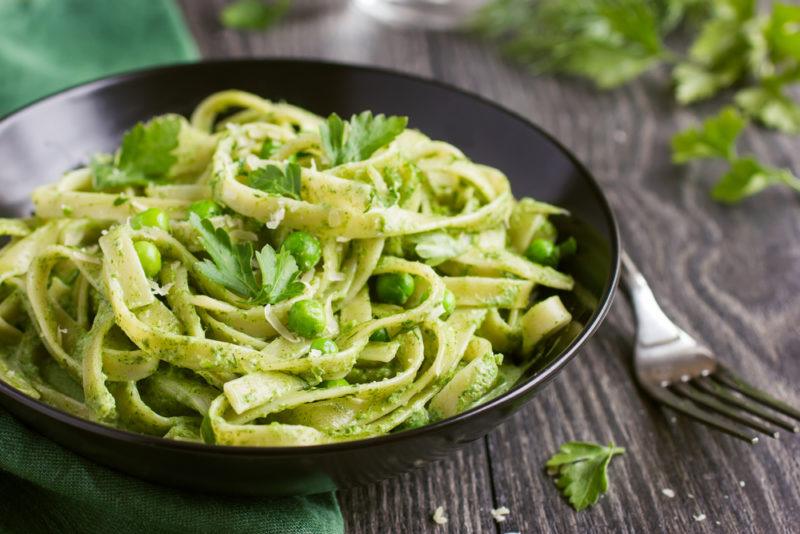
Spinach pasta isn’t as powerful as actual spinach, of course, but you are still getting vitamin K from the pasta. This approach is perfect for picky eaters, as the pasta largely tastes of, well, pasta – rather than spinach.
You can bury any flavor that is present by using a tomato-based sauce. That sauce will provide you with a little vitamin K too, just as a bonus.
Soybeans
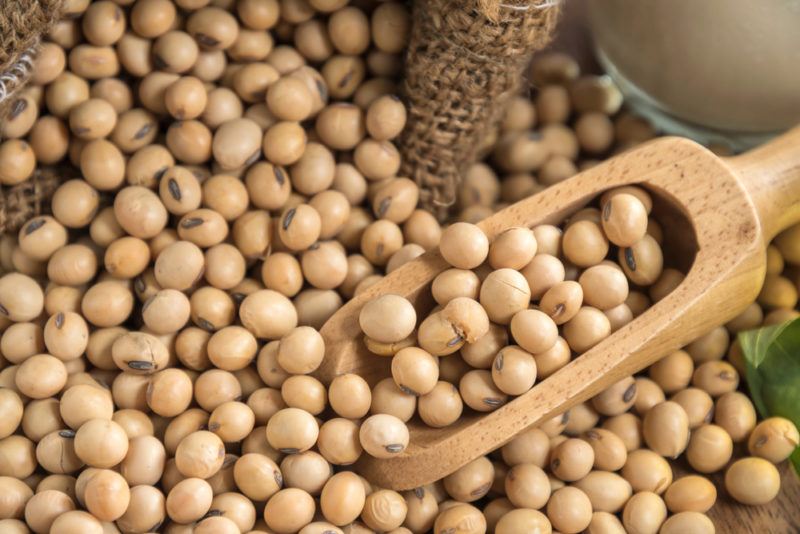
While they’re controversial at times, soybeans do provide you with plenty of nutrients. They’re an excellent source of protein and, not surprisingly, vitamin K too.
This means that many products that use soybeans will give you vitamin K too. However, you’ll need to pay attention to the product that you choose. Some options, like soy milk, use less soy than others.
Soybean oil is a useful choice, as you can cook with it. This makes it one of the easiest ways to increase your soybean intake.
Green Beans

Green beans, sometimes called snap beans, are a moderate source of vitamin K, giving you around 50% of your daily intake in a cooked cup of the beans.
Still, they are a good source of fiber, along with other nutrients.
Nuts

Nuts can give you a burst of vitamin K too. They’re not as powerful as the vegetables that we’ve mentioned so far, but nuts are incredibly easy to snack on, so that’s a serious advantage.
The best choices include cashews and pine nuts (even though pine nuts are technically seeds). Pine nuts are the reason that pesto also provides a surprising amount of vitamin K. You can eat other nuts too. Each type will give you some vitamin K, which adds to your daily intake.
Pumpkin

Pumpkin might not give you as much vitamin K as the leafy green vegetables from earlier. But, it is a versatile ingredient and many people love the flavor.
After all, recipes like pumpkin pie and even pumpkin spice lattes often use pumpkin puree. That’s much more appealing than a large plate of spinach or kale.
Avocado

Avocados are the last vitamin K1 food that we’ll feature. But, avocados are too good to miss. They’re an incredibly popular source of healthy fats and can be used in many ways, such as avocados on toast or even baking an avocado in the oven.
The biggest challenge is that avocados don’t stay ripe long. You need to move on them fast to get the best flavor.
Natto

Natto is a Japanese dish that is made from fermented soybeans. It is a fantastic choice for vitamin K. Interestingly, while soybeans themselves are better for vitamin K1, natto gives you a very high amount of vitamin K2.
The fermented nature of the meal should help with nutrient absorption. You may also be improving your balance of gut bacteria at the same time.
A word of warning though – natto isn’t an easy meal to enjoy. It can be slimy and has a distinct smell that isn’t all that pleasant. Some people love the dish. Others can’t stand it.
Fermented Food

Other fermented foods offer vitamin K2 as well, including sauerkraut and miso. Fermented foods have other advantages too, including the way that they can help to promote gut health.
There’s another interesting thing too. Fermented foods contain a different set of vitamin K2 subtypes than animal foods. The subtypes in fermented foods tend to have longer chains than the ones that you find in animal foods. This may mean that there are differences in the effects on your health.
Liver

Liver tends to be a powerful source of vitamin K2 – and the amounts vary dramatically depending on the type that you choose. The most notable is goose liver. The liver itself may not be easily available to you, but you may be able to find it in the form of goose liver pate.
You can also turn to beef liver and chicken liver. While these both contain less vitamin K2 than goose liver pate, they do tend to be easier to find and are less expensive too.
Red Meat
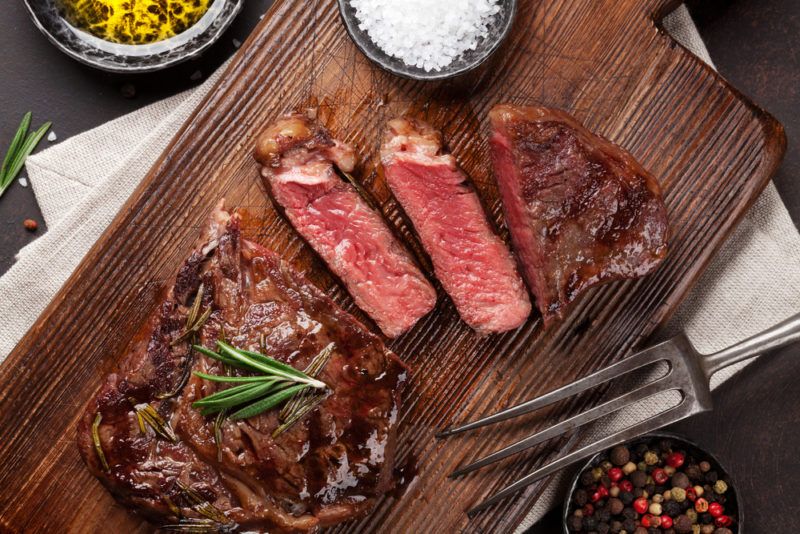
We mentioned that vitamin K2 is found in animal foods, so it shouldn’t be too surprising to see red meat on this list. Notably, vitamin K2 is a fat soluble vitamin. This means that it is much less prevalent in lean foods. As a result, fatty cuts of meat are a better choice for vitamin K2 than lean ones.
Now, red meat is controversial. While it is rich in nutrients and protein, some evidence suggests that eating too much red meat is bad for you and may increase heart disease and cancer risk. The problem is even worse for processed meat.
The best approach isn’t to cut red meat out, but to focus on moderating your intake instead. Make sure that you rely on other sources of protein too.
Chicken

While chicken is leaner than red meat, it does still provide you with vitamin K2. This is even true for chicken breast, which is good news for anyone who hopes to focus on lean protein.
Chicken breast has other advantages too. It is a versatile type of meat, one that you can use in many ways. Chicken breast also happens to be easy to find and can be fairly inexpensive, making it an ideal choice for many situations.
Pork

We can’t talk about meat and miss pork off the list. You’ll often be getting a little more vitamin K from pork than from chicken, although this does vary depending on the cuts of meat that you choose.
Other Meats
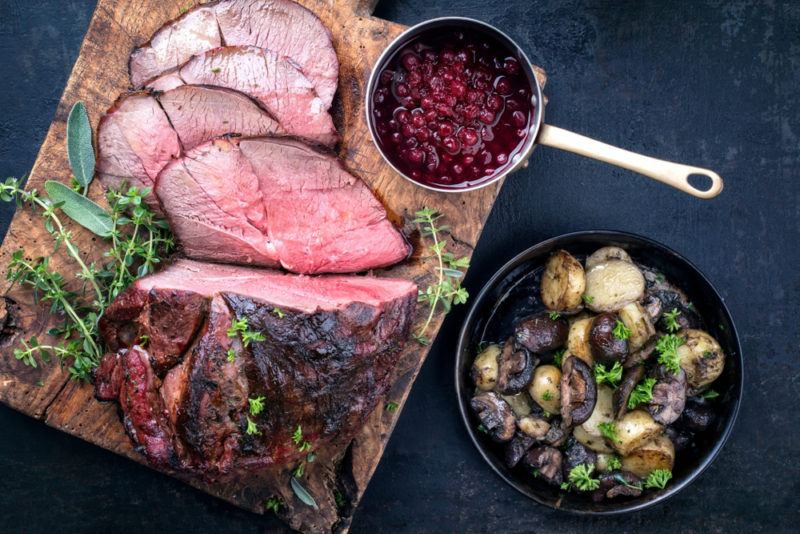
We’ve featured red meat, chicken, and pork on this list, so you should already be seeing a pattern. You can basically turn to any type of meat to get some of your daily vitamin K2.
Fattier cuts tend to be the best sources, but don’t worry too much if you rely on lean meat instead. After all, the daily recommended intake for vitamin K2 isn’t that high. It doesn’t take much effort to hit your targets each day.
Cheese

For many people, cheese will be the logical way to get more vitamin K2. The vitamin K2 concentration can be high, especially if you are focusing on hard cheeses.
Soft cheeses have considerably less vitamin K2 per hundred grams and curd cheeses, like cottage cheese, have less again.
The amount of vitamin K2 doesn’t just vary from one type of cheese to the next. It can also be different depending on the region the cheese is made, who produces it, and even the batch.
Eggs

Eggs seem to feature on most nutrient rich food lists, which should tell you a thing or two about how powerful they are. The egg yolk is the part that contains the vitamin K2 (along with many of the other nutrients). This is one reason why eating egg white only is rarely a good idea.
There is no shortage of ways to enjoy whole eggs regularly, including making an omelet, a quiche, or just enjoying poached eggs on toast.


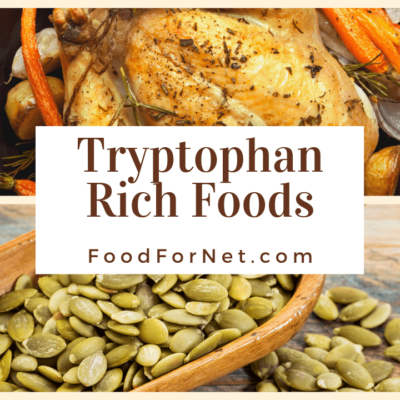












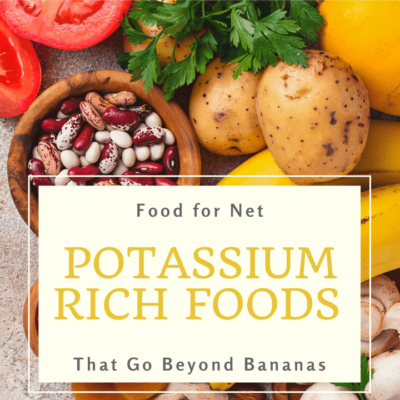

 10 Tampon Delivery Services
10 Tampon Delivery Services
Very balanced and informative Thank you
Very informative Thank you